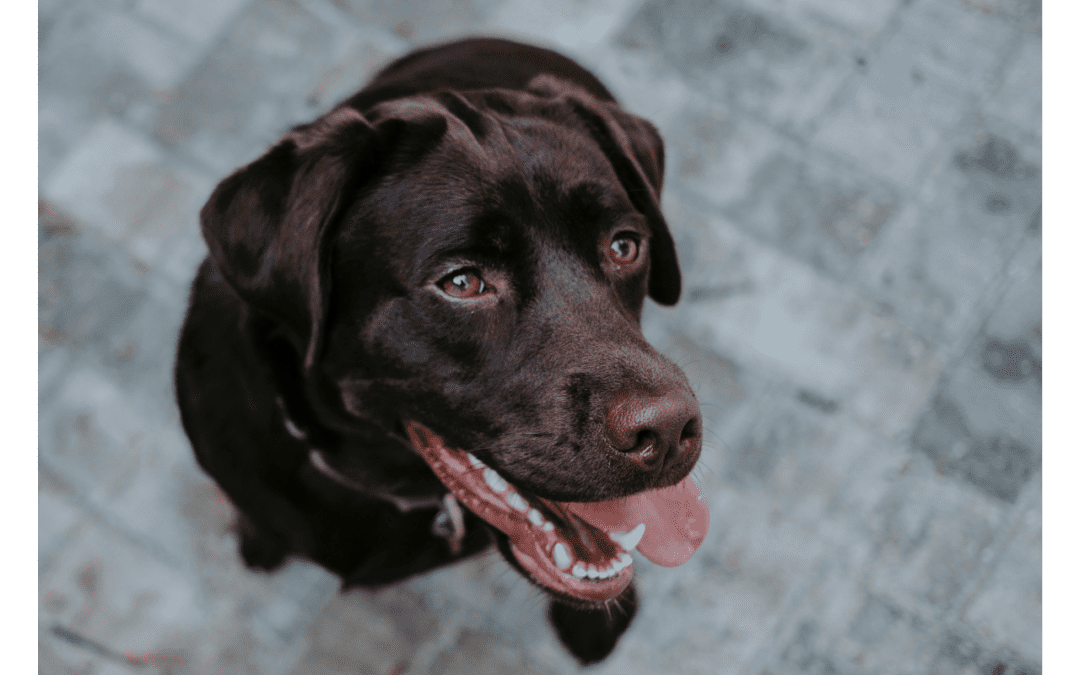“Do I have to brush my pet’s teeth?” is a common question I receive from many pet owners. The simple answer: Yes, though there is much more that contributes to dental health for our pets.
Let’s start with a brief overview of periodontal disease in pets:
- Over 80% of dogs over the age of 3 have active periodontal disease.
- Periodontal disease is a word to describe infection and inflammation of the tissues surrounding the tooth.
- Gingivitis – inflammation of the gums – is the first sign of periodontal disease in pets and the only truly reversible stage.
- If gingivitis is left untreated, it can spread deeper into the tooth socket, destroying the bone. Over time, the tooth becomes loose and may fall out over time.
So, what can we do to prevent severe periodontal disease from occurring? It takes a combination of at home care and veterinary dental care. The best way to prevent plaque build up is through daily tooth brushing using dog/cat specific toothpaste. Plaque is the sticky film of bacteria that accumulates on the tooth surface and if left untreated will form into a hardened calcified deposit called tartar. Some diets/chews/treats may help delay plaque and tartar buildup as well. The Veterinary Oral Health Council evaluates dental products for effectiveness and their seal of approval can be found on those that can reduce the accumulation of plaque and tartar. Their website is an excellent place to find approved dental products for dogs and cats.
I recommend owners follow these steps to introduce regular dental at-home routines for their pet:
- Ideally, start brushing your pet’s teeth as puppies/kittens to get them used to the process.
- Choose a time and place where your pet feels calm and relaxed.
- Kneel/sit next to your pet.
- Introduce a finger along the gumline for 1-2 weeks, slowly applying more pressure. After a few weeks apply some pet safe toothpaste. to your fingers to rub along the gumline.
- Once pet is comfortable with the feeling of your finger along the gumline, introduce the toothbrush. Gently lift their lip to access the teeth. Use the brush at a 45-degree angle using small circular motions.
- Finger brushes work great in small dogs and cats. Longer brushes are better for large dogs to help reach the back of the mouth.
Additionally, it is best to sign up for pet insurance as early as you can to potentially save some money later. Most insurance companies will not cover dental cleanings unless the policy was started before the pet loses their baby teeth (around 4-5 months of age).*
Plaque may mineralize into tartar faster in some pets than others – which is why some pets, particularly small breeds and greyhounds, may require more dental care in their lifetime than others. Once plaque hardens into tartar/calculus, a professional dental cleaning is needed to remove that material as brushing/diets will not be able to remove this amount of accumulation.
Detecting periodontal disease can be challenging as signs in pets can be vague and they can continue to eat and act normal despite being in considerable pain due to their teeth. Some signs to look out for include:
- Bad breath
- Bleeding of the gums/bloody saliva
- Discolored teeth
- Loose/missing teeth
- Weight loss
- Irritability
- Decrease in appetite
So, what happens if periodontal disease is left unchecked? The disease process can start to affect a pet’s systemic/overall health as significant bacteria within the mouth can enter the pet’s bloodstream and cause damage to organs such as the heart, liver, and kidneys. It’s best not to wait that long and that’s one of the reasons we’re here to offer professional dental care for your pet.
At Love City Vet, a professional dental cleaning involves:
- Placing the pet under general anesthesia
- Scaling all surfaces of the teeth to remove plaque and tartar
- Taking full mouth dental x-rays to evaluate the tooth roots and surrounding bone
- Polishing teeth to smooth the surfaces and prevent plaque from sticking in the future
Anesthesia-free dental cleanings are not recommended. The American Veterinary Dental College highlights that this type of procedure should be avoided “because it does not allow for cleaning or inspection under the gum line where most disease occurs. A pet that is not anesthetized can also result in injury to the pet or person performing the procedure and also result in unnecessary discomfort, stress and pain for the pet.”
In preparation of National Pet Dental Health Month in February, we will be offering $100 off dental cleanings scheduled during January and February. If you have a question about your pet’s dental hygiene or want recommendations for at home care, please let us know at your pet’s next veterinary appointment!
*Every insurance policy is different. Make sure to research your individual policy to determine what is covered for dental care for your pet.

